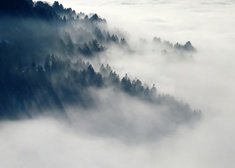Featured Quizzes
User Quizzes
Create Quiz
Data and Charts
Badges and Games
About JetPunk
JetPunk Shop
Dark Mode

Aviation Ceilings and Visibilities
When talking about aviation, what are some of the things that will alter our flight rules? How can we anticipate the occurrence of these events? You will have 5 minutes to answer questions related to ceilings and visibilities, including the discussion of phenomena like fog.
Rate:
Last updated: December 11, 2022
You have not attempted this quiz yet.
More quiz info >>
| First submitted | December 11, 2022 |
| Times taken | 1 |
| Average score | 51.9% | Report this quiz | Report |
5:00
Enter answer here
0
/ 27 guessed
Time Used
00:00
Best Time
00:00
The quiz is paused. You have remaining.
Scoring
You scored / = %
This beats or equals
% of test takers
also scored 100%
The average score is
Your high score is
Your fastest time is
Keep scrolling down for answers and more stats ...
|
|
Comments
No comments yet
New and Popular
Save Your Progress
Copyright H Brothers Inc, 2008–2024
Contact Us | Go To Top | View Mobile Site
